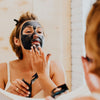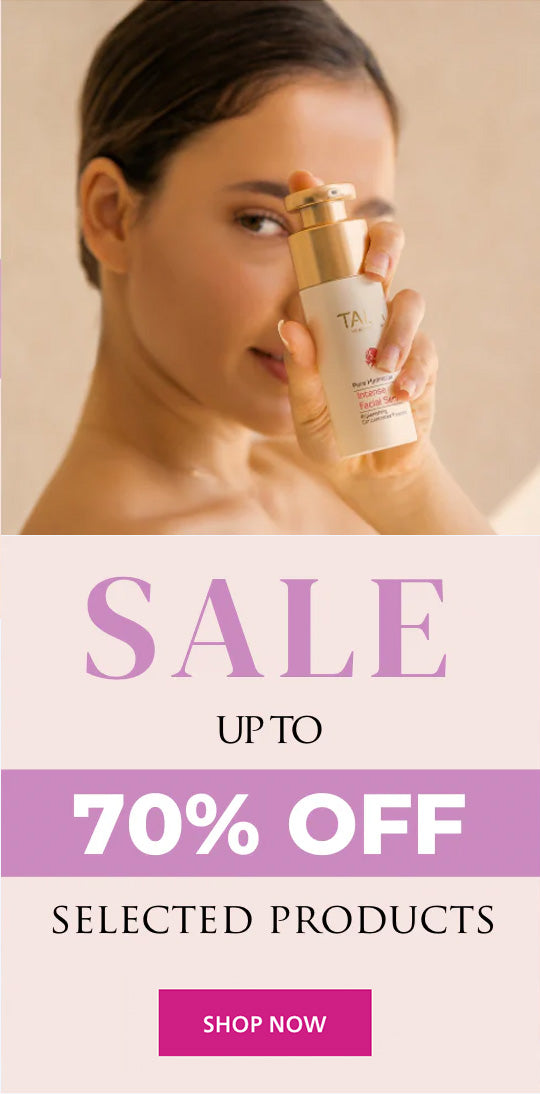Decoding SPF: Everything You Need to Know About Sun Protection

While many of us dutifully apply sunscreen, there’s often a lingering confusion about what those three little letters on the bottle truly mean. At Jericho Skincare Australia, we’ve already tackled the lesser-known facts about sunscreen usage and curated a skincare product collection for sun damage. This time, we’ll decode SPF and answer questions like, ‘What is SPF?’ ‘What do SPF numbers mean?’ and so much more.
What is SPF, and What Does It Mean?
SPF stands for Sun Protection Factor and is a numerical value that indicates how well a sunscreen can shield your skin from the sun’s damaging UVB rays. These UVB rays are the primary culprits behind sunburns and a significant risk factor for skin cancer. Sunscreens absorb or reflect UVB rays before they can penetrate your skin’s delicate layers.
But here’s the catch: SPF doesn’t measure the overall sun protection. There’s a common misunderstanding about SPF. Many people think that if they typically get sunburnt in one hour, then using an SPF 15 sunscreen will allow them to stay in the sun for 15 hours (or 15 times longer) without getting sunburnt. However, this may not be accurate because SPF is related to the amount of solar exposure—not the time spent in the sun.
To clear things up, many experts have explained that SPF is a measure of the amount of solar energy (UVB radiation) needed to inflict sunburn on skin protected by sunscreen relative to the amount of solar energy needed to cause sunburn on unprotected skin. As the SPF value gets higher, so does the level of sunburn protection. But you have to understand that although the amount of solar energy is related to the time of solar exposure, other factors, such as the intensity of the solar energy, also play a significant role. For example, one hour of exposure at 9:00 a.m. and 15 minutes of exposure at 1:00 p.m. can result in the same amount of solar energy due to differences in solar intensity throughout the day.
Solar intensity is also influenced by geographic location, with lower latitudes generally experiencing greater solar intensity. Furthermore, solar intensity is higher on clear days than on cloudy days, as clouds absorb solar energy. Apart from solar intensity, factors such as skin type, the amount of sunscreen applied, and reapplication frequency also affect the amount of solar energy you may be exposed to.
So, Will SPF 15 Protect You from Sunburn?
While SPF 15 does offer some protection, it’s generally considered the bare minimum for adequate sun defence. An SPF of 15 blocks around 93% of UVB rays, which means that 7% of those harmful rays still reach your skin. It’s recommended to use a broad-spectrum sunscreen with an SPF of 30 or higher for optimal sun protection.
How Much SPF is Enough?
As mentioned, the higher the SPF value, the higher the level of sunburn protection. But higher SPF values don’t necessarily mean exponentially better protection. For example, an SPF 30 sunscreen shields your skin from about 97% of UVB rays. On the other hand, a sunscreen with SPF 50 may block around 98%. The difference in protection is relatively small, but every bit counts in shielding your skin.
Again, most experts recommend using a broad-spectrum sunscreen with an SPF value of 30 or higher and reapplying it every two hours or so or more frequently if you’re swimming or sweating. Also, no sunscreen is entirely ‘waterproof’ or ‘sweatproof,’ so we can’t stress it enough: you must reapply your sunscreen.

UPF vs. SPF: What’s the Difference?
While SPF measures protection against UVB rays, UPF (Ultraviolet Protection Factor) measures protection against both UVB and UVA rays. UVA rays are responsible for premature skin ageing, wrinkles, and potentially skin cancer. When it comes to sun protection, be sure to choose products that offer broad-spectrum coverage, meaning they protect against both UVB and UVA rays.
What SPF to Use in Australia?
Living in the land of sunshine and stunning beaches, Australians need to be extra vigilant about sun protection. The Australian Cancer Council recommends using a broad-spectrum, water-resistant sunscreen with an SPF of 30 or higher for daily use. An SPF of 50+ is vital for extended outdoor activities or intense sun exposure.
How to Pick the Right Sunscreen for Your Skin Type
Since we’re a skincare company, we’ll also help you find sunscreen products appropriate for your skin type. Here are some tips for you:
Normal Skin
- Look for lightweight, non-greasy, and non-comedogenic sunscreens.
- Both chemical and mineral sunscreens can work well for normal skin types.
Dry Skin
- Consider moisturising sunscreens that contain hydrating ingredients like glycerin, ceramides, or hyaluronic acid.
- Cream-based or gel-cream sunscreens are often better suited for dry skin than lightweight lotions.
Oily/Acne-Prone Skin
- Choose oil-free, non-comedogenic, and mattifying sunscreens to prevent clogged pores and excess shine.
- Gel-based or powdered sunscreens can be good options for oily skin.
Sensitive Skin
- Shop for mineral sunscreens containing zinc oxide or titanium dioxide, as they are less likely to irritate.
- Avoid chemical sunscreens with ingredients like oxybenzone or avobenzone, which can be irritating to sensitive skin.
- Look for fragrance-free and hypoallergenic formulas.
Mature Skin
- Choose moisturising sunscreens with antioxidants and anti-ageing ingredients like vitamins C & E or niacinamide.
- Look for sunscreens that contain hydrating ingredients like ceramides or hyaluronic acid to combat dryness.
Combination Skin
- Look for lightweight, oil-free sunscreens that won’t clog pores in the oily areas but still provide enough hydration for your skin’s drier spots.
- Gel cream or serum-based sunscreens can be a good compromise for combination skin.
Final tip: It’s always a good idea to do a patch test before using a new sunscreen to check for potential reactions.
Summing It Up
Applying sunscreen should be just one part of your sun protection strategy. Seek shade, wear protective clothing, limit your time in the sun during peak hours, and continue learning more about sun protection. That way, you can truly safeguard your skin from the sun’s damaging effects.
Need more tips on how to take better care of your skin? Check out our blogs.






